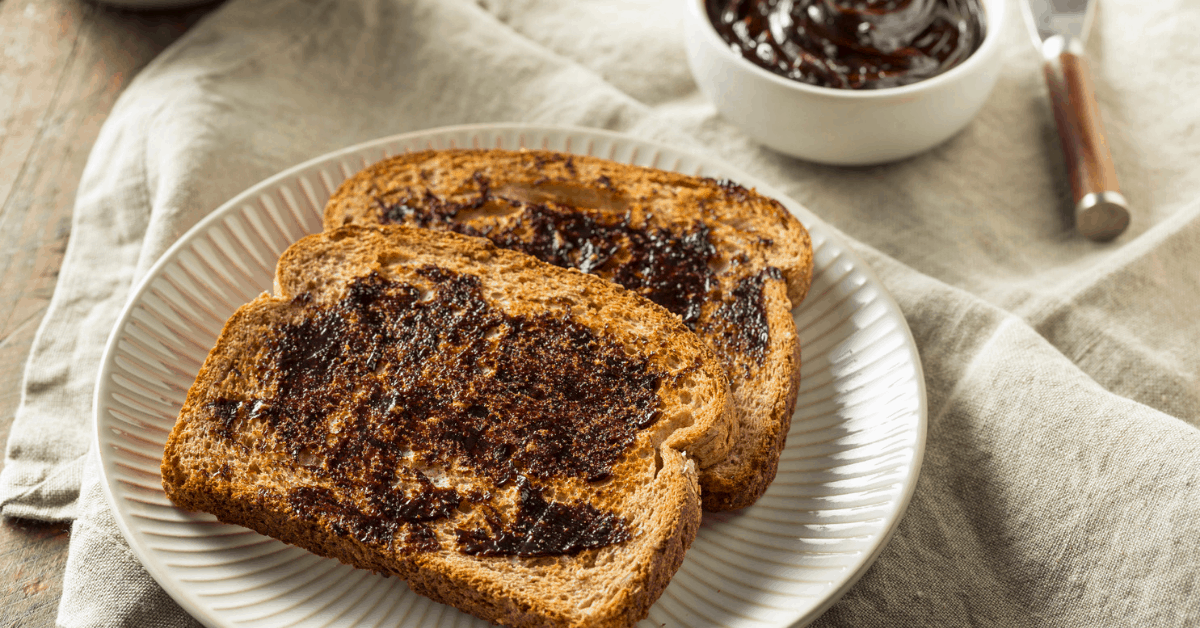We reveal the weird and wonderful dishes that some love… and others can’t stand.

Vegemite, Australia
This black spread, created from leftover brewers’ yeast, is Australia’s own nectar. They serve this protein-packed treat on toast, with lettuce, tomato, or avocado sandwiches, or even in some cases on pizza, in pasta, or on burgers.
During World War I, the import of Marmite supplies from the UK were disrupted so the Australian company Fred Walker & Co created its own version. While Marmite seems to divide the United Kingdom on its own – they either love it or hate it, you’d be hard-pressed to find an Australian who doesn’t like Vegemite.
What’s special about this blend of vegetables and spices is that it embraces the fifth taste, umami – it’s neither sweet, sour, salt, or bitter, but savory.
Haggis, Scotland
There aren’t many people who you could persuade to chow down on a sheep’s stomach filled with minced offal, spices, and oatmeal, but the Scottish love this dish so much that they often announce its arrival with music. When it is served at the traditional Burns supper on January 25, a celebration of the life of Scotland’s most famous poet Robert Burns, a bagpipe player will pipe the haggis in.
It’s traditionally served with neeps and tatties (mashed swede and potatoes) and a dram of Scottish whiskey. Before the dish is served to guests, the host recites the poem “Address To The Haggis”, written by Robert Burns in 1787.
The dish was first recorded in 1430, and it is said to have dated from the time when drovers in the Highlands would take their cattle to market in Edinburgh. It’s thought that carrying a sheep’s stomach was the easiest way to transport their food. There are now vegetarian versions of the dish and the stomach has been switched to an artificial alternative.
Stinky tofu, Taiwan
Even the biggest fans of the Taiwanese stinky tofu, who say it smells of dirty socks, can’t get enough of this street food dish. Tourists who are keen to try it can visit Shenkeng Old Street near Taipei Zoo, which the locals have nicknamed “Stinky Street”.
The fermented tofu is served steamed, barbecued, or deep-fried and often with a spicy broth. If you really want to enjoy it’s oozing, gooey flavor try the deep-fried option, where it takes on the texture of melted cheese. You eat it with pickled cucumber and garlic sauce.
Balut, Philippines
This dish definitely isn’t for those of a nervous disposition or weak stomach, but most Filipinos love it. Balut is an egg that is cooked around 20 days after it’s been fertilized.

They crack the egg, drink the savory broth, and then add a little salt or vinegar to the egg before they eat its contents, which have often started to take on the appearance of a duckling.
Svið, Iceland
While the rest of the world may have just caught on to the idea of nose-to-tail dining, the Icelanders have been practicing it for centuries. Svið, to the uninitiated, is a cooked sheep’s head. With such harsh climates, the Icelanders wouldn’t let any food go to waste, including the head of a sheep.
The head is boiled and the brain is removed and pickled. It’s often served as part of a celebratory buffet. The eyes and cheeks are said to be the tastiest parts, but you should avoid eating the ear. Superstition has it that you could be accused of being a thief by your neighbor.
Surströmming, Sweden
The world might crave Sweden’s flat-pack furniture, but it’s yet to go crazy for one of its foods. Surströmming has remained the preserve of Scandinavia. Likened to the smell of rotten eggs, Sweden’s sour herring is mostly eaten on its shores.
It was created in the 16th-century when a shortage of salt meant they were unable to preserve their fish properly. They sold the rotting herring covered in a sprinkling of salt to the Finns and the Finns returned a year later asking for more.
You’ll be able to spot a can of Surströmming from a mile away as the gases from the fermenting fish cause the tin to bulge. They serve the deboned fish on open sandwiches, and often al fresco so the scent can be dispersed by the fresh air.

Mopane worm, Zimbabwe
These savory snacks are a favorite of Zimbabweans. The cigar-sized insects are caught by locals when the worms dine-in mopane trees starting their journey to become emperor moths. The villagers then squeeze out the soft liquid within the worms and leave them to dry in the sunshine.
If the locals don’t squeeze out all the contents of the worm’s stomach, the worm when dried is said to take on a tea-like flavor.
This snack is eaten in the same way that you munch on a packet of crisps, but unlike the Western fatty snack, this crispy treat comes packed with protein – apparently three times as much protein as you would find in beef.



